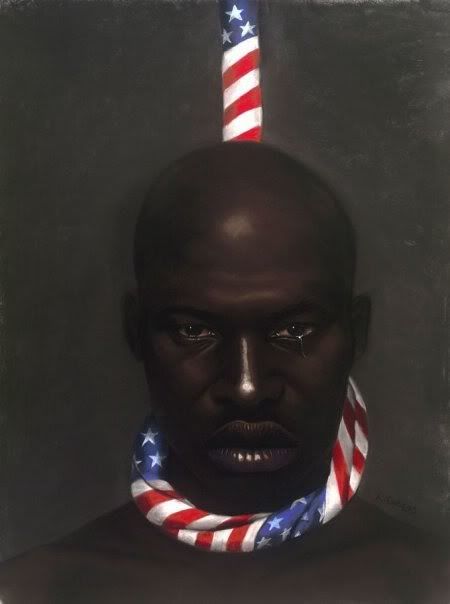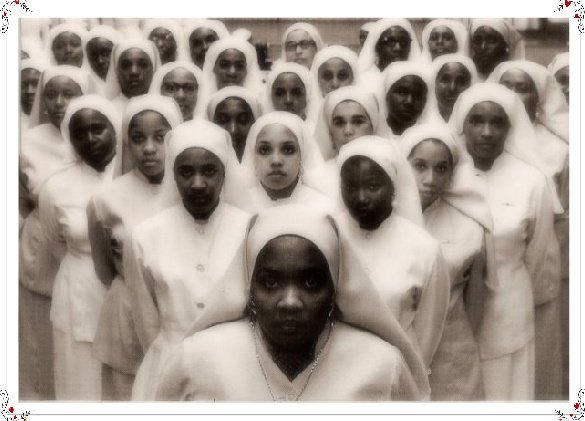

Shem Hotep ("I go in peace").

Masked Racism: Reflections on the Prison Industrial Complex.

Imprisonment has become the response of first resort to far too many of the social problems that burden people who are ensconced in poverty. These problems often are veiled by being conveniently grouped together under the category "crime" and by the automatic attribution of criminal behavior to people of color. Homelessness, unemployment, drug addiction, mental illness, and illiteracy are only a few of the problems that disappear from public view when the human beings contending with them are relegated to cages.
Prisons thus perform a feat of magic. Or rather the people who continually vote in new prison bonds and tacitly assent to a proliferating network of prisons and jails have been tricked into believing in the magic of imprisonment. But prisons do not disappear problems, they disappear human beings. And the practice of disappearing vast numbers of people from poor, immigrant, and racially marginalized communities has literally become big business.
Almost two million people are currently locked up in the immense network of U.S. prisons and jails. More than 70 percent of the imprisoned populations are people of color. It is rarely acknowledged that the fastest growing group of prisoners is black women and that Native American prisoners are the largest group per capita. Approximately five million people -- including those on probation and parole -- are directly under the surveillance of the criminal justice system. Three decades ago, the imprisoned population was approximately one-eighth its current size. While women still constitute a relatively small percentage of people behind bars, today the number of incarcerated women in California alone is almost twice what the nationwide women’s prison population was in 1970. According to Elliott Currie.
Profiting from Prisoners.
As prisons proliferate in U.S. society, private capital has become enmeshed in the punishment industry. And precisely because of their profit potential, prisons are becoming increasingly important to the U.S. economy. If the notion of punishment as a source of potentially stupendous profits is disturbing by itself, then the strategic dependence on racist structures and ideologies to render mass punishment palatable and profitable is even more troubling. Wackenhut Corrections Corporation (WCC), the second largest U.S. prison company, claimed contracts and awards to manage 46 facilities in North America, U.K., and Australia. It boasts a total of 30,424 beds as well as contracts for prisoner health care services, transportation, and security. Currently, the stocks of both CCA and WCC are doing extremely well. Between 1996 and 1997, CCA`s revenues increased by 58 percent, from $293million to $462 million. Its net profit grew from $30.9 million to $53.9 million. WCC raised its revenues from $138 million in 1996 to $210 million in 1997. Unlike public correctional facilities, the vast profits of these private facilities rely on the employment of non-union labor.

Black folks have so much invested in hating [Supreme Court Justice Clarence] Thomas that seeing him depicted as a handkerchief head, a lawn jockey and a shoeshine boy moved us in ways that more serious and important stories couldn’t. Hating Thomas has been cathartic for most of us.
That’s why we should be the ones demanding that the Senate confirm Brown. Because if one shuffling black conservative-Uncle Tom-handkerchiefhead-Sambo-house-ni@@er on a federal bench has been good for us, imagine what (TWO) can do along with Aunt Jemima Rice?














